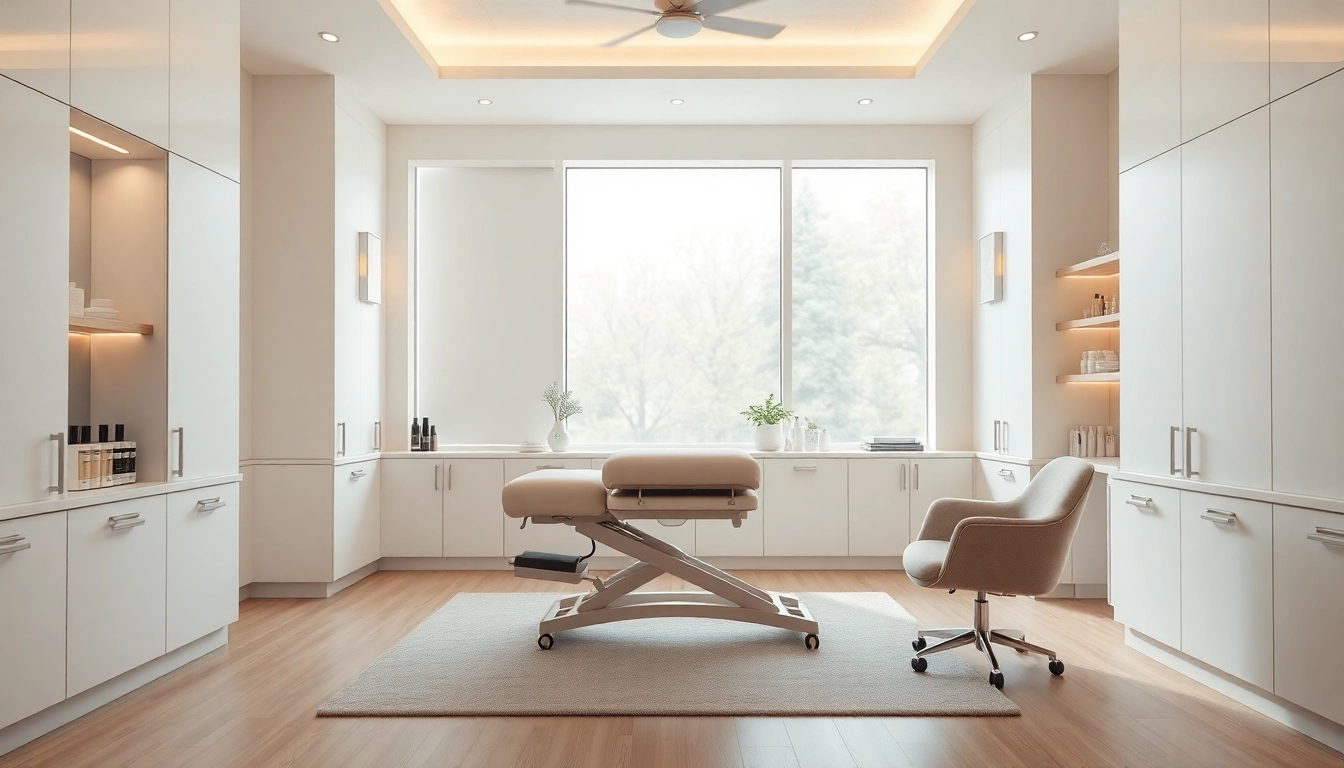Understanding Furniture Hardware Manufacturers
In the ever-evolving world of interior design and furniture creation, the role of furniture hardware manufacturers cannot be overstated. These manufacturers provide essential components that not only enhance the functionality of furniture but also contribute to its aesthetic appeal. From cabinet hinges to drawer slides, the right hardware can elevate the overall design and usability of any furniture piece.
Defining Furniture Hardware and Its Importance
Furniture hardware encompasses a wide variety of components used to assemble, accessorize, or enhance the performance of furniture. This includes, but is not limited to, hinges, nails, screws, locks, drawer slides, knobs, and pulls. Each element serves a specific purpose, ensuring the durability and functionality of furniture pieces. The importance of furniture hardware lies in its ability to facilitate functionality (like smooth opening and closure) while simultaneously catering to aesthetic desires. Quality hardware can significantly improve user experience, leading to better satisfaction and longevity of the furniture.
Overview of Key Types of Hardware
Understanding the different types of furniture hardware is crucial for anyone involved in furniture design, manufacturing, or renovation. Here are some key categories:
- Cabinet Hinges: Essential for door functionality in cabinets, these come in varying styles such as concealed or overlay hinges.
- Drawer Slides: These are mechanisms that allow drawers to open and close smoothly. They are available in different types, including ball-bearing, side-mounted, and center-mounted slides.
- Handles and Knobs: These are not only functional but decorative. They can come in various materials and designs to match any furniture style.
- Locks and Latches: These provide security for items stored in cabinets or drawers and come in different mechanisms such as push locks or key locks.
- Feet and Legs: These components support the furniture and can also add an aesthetic element; options include pads, casters, and adjustable legs.
Choosing the Right Manufacturer for Your Needs
Finding the right furniture hardware manufacturer can be a daunting task, given the abundance of suppliers in the market. Consider the following factors when making your selection:
- Reputation: Research potential manufacturers to gauge their reputation in the industry. Look for reviews and testimonials.
- Product Range: Consider if the manufacturer offers a wide range of products or specializes in certain types of hardware.
- Quality Standards: Ensure that the manufacturer adheres to high-quality standards, which can be verified through certifications.
- Customization Options: Some projects may require specific designs or functionalities, so check if the manufacturer offers tailor-made solutions.
- Pricing Transparency: Look for suppliers that provide clear pricing structures to avoid surprise costs later in the process.
Top Features to Look for in Furniture Hardware
Material Quality and Durability
The longevity of furniture hardware heavily depends on the materials used in its fabrication. High-quality materials not only enhance durability but can also improve the overall look and feel of the furniture. Popular materials include stainless steel, brass, and durable plastics, each offering distinct advantages. For instance, stainless steel provides corrosion resistance, making it ideal for kitchens and bathrooms, while brass adds an elegant touch to decorative furniture pieces.
Design Aesthetics and Compatibility
Design plays a pivotal role in the functionality and appeal of furniture hardware. The hardware selected should not only serve its functional purpose but should also complement the overall design theme of the furniture. For example, sleek, minimalist designs suit contemporary furniture, while ornate hardware fits more traditional settings. Compatibility between hardware and furniture design is essential to maintain a harmonious aesthetic throughout.
Functionality and Ease of Use
Another critical factor to consider is how intuitive and user-friendly the hardware components are. For example, drawer slides that function seamlessly enhance the overall user experience and make interaction with the furniture more enjoyable. Ensure that any hardware used aligns with the intended use of the furniture, providing ease of operation and maintaining user comfort.
How to Source from Furniture Hardware Manufacturers
Researching and Comparing Suppliers
Effective research is the backbone of sourcing high-quality furniture hardware. Start by creating a list of potential manufacturers based on your project requirements. Online platforms, trade shows, and referrals from industry peers can serve as excellent resources for finding reputable suppliers. Consider factors such as shipping times, customer service, and return policies when comparing suppliers.
Evaluating Price vs. Quality
While it might be tempting to choose the cheapest option, focusing solely on price can lead to poor-quality hardware that diminishes your projects’ integrity. Evaluate price in conjunction with quality; a higher upfront investment in hardware can lead to reduced costs in repairs and replacements over time. Establish a budget and balance it against your quality requirements to ensure you select the best possible option.
Building Long-term Relationships with Manufacturers
Once you select a manufacturer, strive to build a long-term relationship with them. Long-term partnerships can lead to preferential pricing, better service, and access to new or exclusive products. Maintain open communication with your supplier to work through any challenges that arise and to discuss future projects. Building rapport can also enhance collaboration, allowing for feedback on product performance and areas for improvement.
Innovations in Furniture Hardware Manufacturing
Eco-friendly Materials and Practices
As sustainability becomes increasingly significant, more furniture hardware manufacturers are adopting eco-friendly materials and practices. Innovations such as recycled metals and sustainable sourcing of raw materials are becoming mainstream. Many manufacturers are also focusing on reducing waste in the production process and developing products that are easier to recycle at the end of their lifecycle. Supporting manufacturers committed to sustainability can align your projects with eco-conscious values while appealing to environmentally aware consumers.
Technological Advancements in Design
The furniture hardware industry is benefiting greatly from technological advancements. CAD (computer-aided design) software allows manufacturers to create precise designs that optimize both functionality and aesthetics. Additionally, 3D printing is becoming more common for prototyping and even producing final products in small batches, offering greater customization options for unique projects. These advancements enable furniture manufacturers to push the envelope in both design and production efficiency, ensuring that their hardware meets contemporary demands.
Customization Options Available
As the market for customized furniture continues to grow, so too does the demand for tailored hardware solutions. Many manufacturers now offer customization options to ensure that hardware fits specific project requirements. Custom finishes, sizes, and shapes can be designed to precisely meet the needs of particular furniture pieces or styles. Engaging with manufacturers who offer customization can add tremendous value to your projects by ensuring that your hardware choices are perfectly aligned with your vision.
Case Studies: Successful Projects Using Quality Hardware
Residential Applications and Transformations
In residential settings, the choice of furniture hardware can dramatically change the ambiance and functionality of spaces. A notable case includes a kitchen remodel where high-quality drawer slides and cabinet handles transformed an outdated kitchen into a modern masterpiece. By selecting hardware that aligned with the cabinetry’s design, the homeowners achieved both aesthetic harmony and improved functionality, allowing for an enjoyable cooking experience.
Commercial Spaces Enhanced by Hardware Choices
Commercial furniture projects also benefit significantly from strategic hardware selections. In an office renovation project, ergonomic drawer pulls and hinges contributed to creating a comfortable environment for employees who use the furniture daily. The selected hardware not only improved usability but also contributed to a cohesive office design, reflecting the company’s culture and prioritizing employee well-being.
Lessons Learned from Leading Furniture Hardware Projects
Through various successful projects, several lessons have emerged regarding the use of furniture hardware:
- Invest in Quality: High-quality hardware stands the test of time and performance, ultimately saving on costs.
- Design Cohesion is Key: Ensuring hardware aligns with overall furniture design can enhance the visual appeal of furniture projects.
- Prioritize Functionality: Hardware should elevate the functionality of furniture, ensuring a user-friendly experience.
- Be Open to Innovation: Keeping up with the latest trends and innovations allows for better choices that meet contemporary demands.


